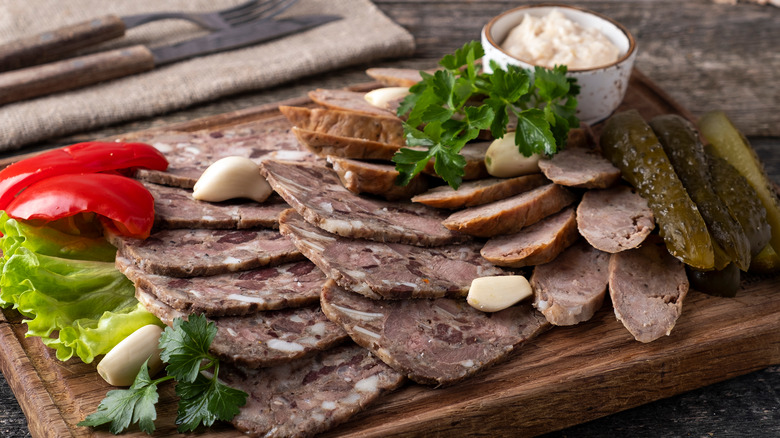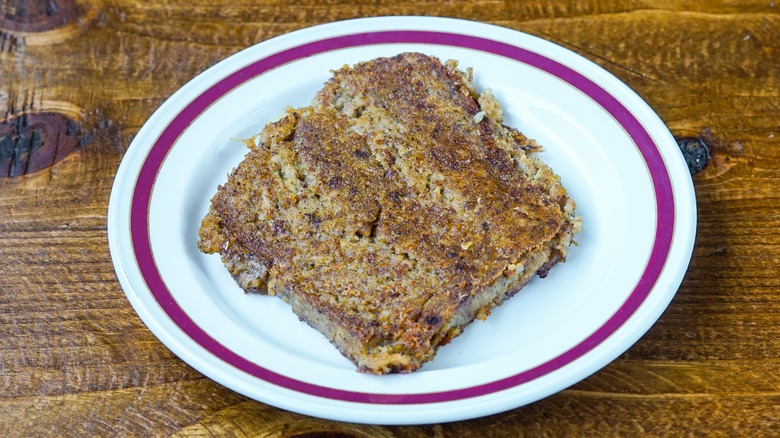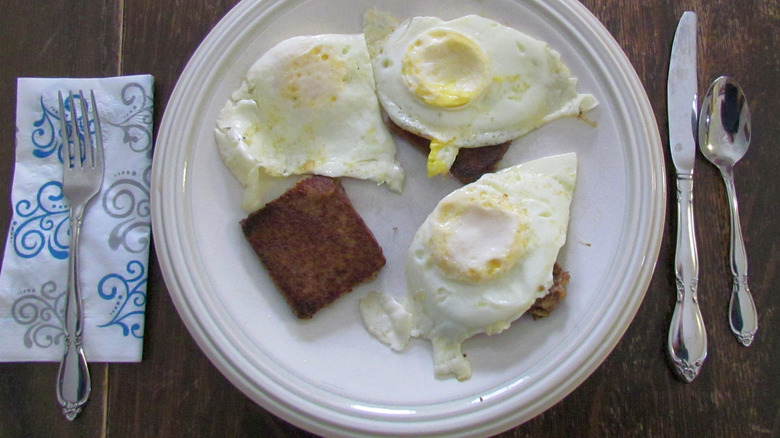Can You Eat Scrapple Raw?
The art of butchery focuses on one primary goal — getting the most value and cuts from the animal as possible. This is usually accomplished by charging premium prices for prized cuts of meat. But throughout culinary history, one particular dilemma has plagued butchers, chefs, and their customers: What do we do with the scraps? In the culinary world, this question has a few answers: grind it, spice it, and loaf it.
From French pâté to Scottish haggis, from sausages to Spam, cultures across the world have been finding ways to use every last scrap of meat. The Pennsylvania Dutch are no exception, and their scrapple has gained renown in the American Northeast as a breakfast staple and as an iconic regional dish, one that rivals meatloaf and mortadella alike. However, contrary to its broiled, smoked, or cured cuisine cousins, scrapple has a rather unique method of traditional processing that has inquisitive scrapple fans asking, "Can we eat scrapple raw?" But to answer that question, we first need to figure out what scrapple even is.
What is scrapple?
The Pennsylvania Dutch Dictionary identifies scrapple, also called pannhaas in the traditional Pennsylvania Dutch dialect, as a minced meatloaf typically made of pork offal (trimmings, scrap meat, and organs), spices, and cornmeal (and later wheat flour or buckwheat flour). Scrapple is a uniquely American dish according to the Philadelphia Encyclopedia, as it combines Old World cooking traditions with New World ingredients. The encyclopedia entry goes on to explain how when German settlers migrated to parts of Pennsylvania, they brought their culinary traditions with them and adapted these dishes to American agriculture trends, which included corn. In 1863, Isaac S. Habbersett founded the Habbersett brand, spotlighting scrapple in addition to other pork products, and commercial production and distribution of scrapple allowed the local dish to emerge as a household staple for the Pennsylvania region and beyond.
The book "Domestic Cookery" by Elizabeth Ellicott Lea, published around 1869, references the basic traditional process of making scrapple starting with boiling the pork scraps down to a broth. The meats and solids are then removed from the broth and ground with spices like sage, savory, thyme, and ground black peppercorns. Lastly, the mix is returned to the strained broth, combined with cornmeal or wheat flour, and placed in a loaf pan to cool and congeal overnight. Once cooled, the cuisine potential of scrapple is truly endless. Now that we know what and how it's made, is it safe to eat right out of the package?
Can you eat scrapple out of the package?
According to Food Network, scrapple aficionados would say that it's a meal for any time of day but popularly served with breakfast, as you would sausage or bacon. In the preparation of scrapple, the meat is boiled for an extended period of time — and therefore cooked to a safe-for-consumption temperature — so it is, in fact, safe to eat scrapple "raw."
However, it's typically sliced into patties and pan-fried in butter, lard, or oil, similar to Spam. Others prepare their scrapple by broiling the loaf entirely to get a crispy char on the outside similar to a traditional American meatloaf. Additionally, scrapple can be used as a general substitute for any dish that would feature sausage, chorizo, or even kofta. Beloved in particular in Delaware and Baltimore (at least according to Delmarva Now), you can see just how much impact scrapple has on the region's culinary identity through events like the Apple Scrapple Festival in Bridgeville, Delaware.
Though scrapple has its foothold in the American Northeast, a handful of other regions in the United States have developed their own variations of scrapple. For instance, Eater breaks down the subtle differences between the scrapple of the Northeast, livermush of the South, and Midwest-adapted scrapple unique to certain parts of Ohio called goetta. Any way you slice it, scrapple has had an undeniable impact on the culinary traditions of the U.S., making it as vital a piece of Americana as pizza and apple pie.


